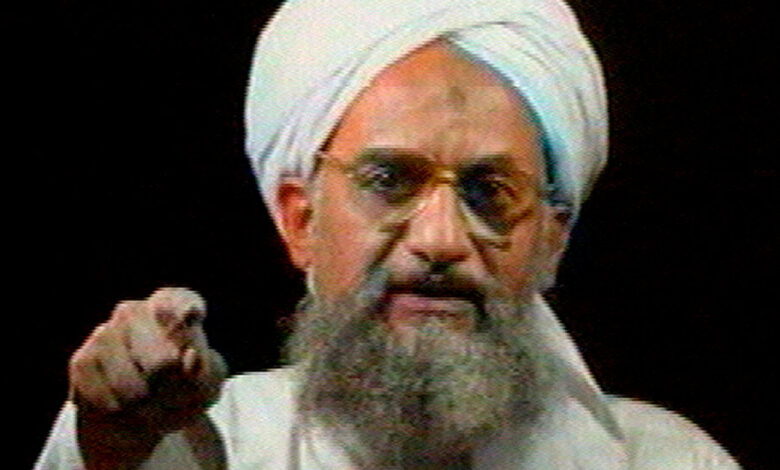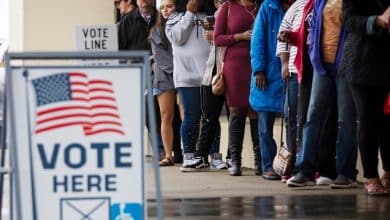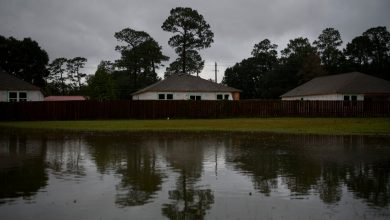The Killing of Ayman al-Zawahri: What We Know

The United States announced on Monday that it had killed Ayman al-Zawahri in a drone strike in Afghanistan, ending a 21-year-manhunt for the terrorist leader, who was instrumental in the attacks of Sept. 11, 2001, and who took command of Al Qaeda after Osama bin Laden’s death.
The killing of al-Zawahri, who was one of the world’s most wanted and feared terrorists, is considered a major victory for the Biden administration.
But the strike has also raised questions about the terrorist leader’s presence in Afghanistan one year after President Biden withdrew American forces from the country, clearing the way for the Taliban to retake control. Here is what we know so far about the attack, who al-Zawahri was, and the consequences of his killing.
The Killing of Ayman al-Zawahri
- What do we know about the attack?
- Who was Ayman al-Zawahri?
- What was he doing in Afghanistan?
- Didn’t the Taliban promise to cut ties with Al Qaeda?
- How have Afghans reacted to the strike?
What do we know about the attack?
Al-Zawahri was killed by the C.I.A. in an early-morning drone strike over the weekend in the Afghan capital, Kabul, American officials said. He was targeted at a house in the Sherpur area, a wealthy downtown neighborhood that once housed dozens of Western embassies and now is home to some high-ranking Taliban officials.
Mr. Biden, in a nationwide address delivered from a balcony at the White House, said that he had authorized the strike two days earlier. “Now justice has been delivered and this terrorist leader is no more,” he said.
The operation to kill al-Zawahri had been in motion for months. American intelligence agencies located the safe house where he was hiding earlier this year, after intelligence sources learned that his family had moved there. The C.I.A. then tracked his movements until they received authorization for the strike, and targeted him on a balcony with two Hellfire missiles, officials said.
American officials said that nobody else was killed in the attack, including members of his family or any nearby civilians. Taliban security forces have restricted access to the blast site and there has not yet been independent confirmation that no civilians were killed.
Who was Ayman al-Zawahri?
Al-Zawahri, who was killed at 71, was an Egyptian-born doctor — a surgeon who had committed to violent revolution at the age of 15, when he helped form a militant cell seeking to overthrow the Egyptian government.
He emerged as a master of terrorism and was widely considered the architect of the Sept. 11 attacks against the United States in 2001.
Many counterterrorism experts considered him the intellectual spine of Al Qaeda. Al-Zawahri was Bin Laden’s personal physician. The men became allies, pooling their resources to create an instrument of mass murder to hurt Western powers and governments they supported. Al-Zawahri supplied the political acumen and direction; bin Laden provided money, prestige and charisma.
The legacy of their efforts took an uncertain turn 11 years ago after bin Laden was killed in a raid by a U.S. Navy SEAL team in Pakistan. Many believed Al Qaeda could not survive his absence. But al-Zawahri took up the mantle and managed to keep together the group’s disparate global franchises even with the rise of the Islamic State militant group and as Al Qaeda branches in Yemen and West Africa’s Sahel region exerted more independence and authority, officials said.
What was he doing in Afghanistan?
The attack against al-Zawahri is the first known counterterrorism strike in Afghanistan since Mr. Biden withdrew American forces almost one year ago, nearly 20 years after the United States invaded the country to drive Al Qaeda out.
Officials have said that al-Zawahri had moved back to Afghanistan earlier this year, after American forces withdrew.
Al-Zawahri was long believed to have been living in Pakistan. His safe haven in Kabul is an indication of Al Qaeda’s continued use of facilities, houses, buildings and compounds between Afghanistan and its neighbor.
Al Qaeda had a strong presence in the country when the Taliban last ruled it — the key reason that the U.S. invaded in 2001, in the wake of the Sept. 11 attacks.
Throughout much of the war, Qaeda fighters were largely seen as battlefield advisers among their insurgent brethren and experts at roadside bomb construction and suicide attacks.
But some Taliban factions had a closer relationship with the terrorist organization than others — especially the Haqqani network, whose senior leadership aided bin Laden during the Soviet-Afghan war.
In his speech on Monday, Mr. Biden said al-Zawahri’s killing validated his commitment to continue counterterrorism operations despite his decision to remove U.S. troops from Afghanistan.
“I made the decision that after 20 years of war, the United States no longer needed thousands of boots on the ground in Afghanistan, to protect America from terrorists who seek to do us harm,” he said. “And I made a promise to the American people that we would continue to conduct effective counterterrorism operations in Afghanistan and beyond. We’ve done just that.”
Didn’t the Taliban promise to cut ties with Al Qaeda?
A deal between the United States and the Taliban, the Doha Agreement, was signed in February 2020.
The agreement promised the withdrawal of all NATO troops from Afghanistan, conditioned in part on a commitment from the Taliban to keep groups like Al Qaeda from using Afghanistan as a base for attacks on the West.
Western officials hoped the deal would sever ties between the Taliban and international terrorist networks.
Although the Taliban have said repeatedly that they were adhering to the Doha terms, analysts have warned that groups including Al Qaeda and Tehrik-i-Taliban Pakistan, or the Pakistani Taliban, had found refuge in Afghanistan since the Taliban’s takeover last year.
In June, a United Nations report warned that Al Qaeda had found “increased freedom of action” in Afghanistan since the Taliban seized power. The report noted that Al Qaeda leaders were possibly living in Kabul, and that an uptick in public statements by al-Zawahri suggested that he was able to lead more effectively after the takeover.
Al-Zawahri’s presence in Kabul will only further call into question the Taliban’s commitment to their end of the peace deal.
How have Afghans reacted to the strike?
The Taliban on Tuesday strongly condemned the drone attack, calling it a “violation of international principles and the Doha agreement” but did not confirm or respond to the reported killing of al-Zawahri.
“Such actions are a repetition of the failed experiences of the past years and are against the interests of the U.S.A., Afghanistan and the region,” a top Taliban official, Zabihullah Mujahid, said in a statement.
The attack, in a busy neighborhood, alarmed civilians across Kabul, who responded with anger and helplessness. Nearly a year after the Taliban seized power, their country is on the verge of economic collapse.
“I wish we had this power to defend our country,” said Ezatullah, a 29-year-old from Logar Province had traveled to Kabul to receive his marriage license and whose full name is being withheld for security reasons.
“The people can’t show any reaction or anger because they cannot say what they want to and they have economic problems,” he said. “Everyone is busy finding a piece of bread for themselves.”
Munir, 57, who lost his job after the Taliban came to power and whose full name is also being withheld, said that al-Zawahri’s presence in Kabul was a clear indication that the Doha Agreement had been broken.
“The violation of the Doha Agreement is to the detriment of the Afghan people; the Afghan people are too weak to react to the attacks,” he said, adding that the people of Afghanistan “have always been victims of foreign and domestic policies.”
Christina Goldbaum, Yaqoob Akbary and Thomas Gibbons-Neff contributed reporting.




